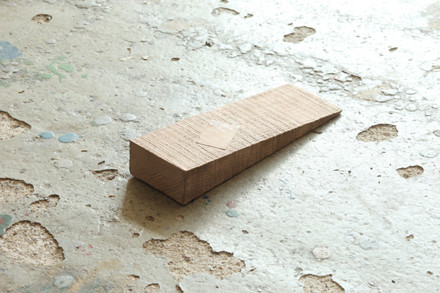Jürgen Drescher
24 Jan - 01 Apr 2013
Badischer Kunstverein is pleased to present Jürgen Drescher with his most extensive solo exhibition in Germany to date. For over three decades, Drescher has been negotiating in his works the formal, poetic, and performative potentials of sculpture against the backdrop of artistic, economic, and ecological processes of value creation. The exhibition, which is titled dig it, traces an arc from Drescher’s current and recently produced works to his early artwork from the 1980s.
From the beginning of Jürgen Drescher’s career, the strategies of transfer and context shifting have played a central role in his artistic approach—the act of shifting things, artifacts, or even situations from their everyday contexts into the space of art. In 1981, Drescher—while still studying under Klaus Rinke at the art academy in Düsseldorf—had already turned a bar into an installation as his artistic contribution to that year’s annual exhibition. The potential sales situation—the annual exhibition as “training” for the art market—was short-circuited with the real vending situation of the bar. In terms of form, the installation had been reduced to essentials, and precisely the circumstance that it was in fact fully functional—Drescher himself was bartending—caused the margins between model and reality, form and performance, cultural and economic value to be blurred in a productive way.
Jürgen Drescher’s work of the 1980s and 1990s was predominately characterized by transfer or by the transformation of real objects, as is apparent in the work Korridor (1984), where the threadbare carpet of the hallway in the artist’s home has been translated into a display-like wall relief. Yet in recent years Drescher has specifically devoted himself to the technique of metal casting, which he employs to reproduce everyday objects. In taking recourse to the art of casting, Drescher has taken up a sculptural technique that allows things to become an image of themselves: ladders, benches, boxes, or even soft materials like blankets assume an abstract, almost minimalist language of form despite the inherent figurative concreteness of the cast. In addition to calling on casting as a method of reproduction, Drescher has pursued the plastic modeling of figures and figurations, such as the sculpture of Dian Fossey and the gorilla named Digit specially created for this exhibition.
The exhibition at Badischer Kunstverein highlights Jürgen Drescher’s more (and most) recent works so as to pointedly draw on the artist’s oeuvre from this point of origin, exploring the complexity of his artistic creativity over the past several decades
With the kind support of Stiftung deutsche Pfandbriefbank pbb
Special thanks are extended to the galleries Mai 36, Zurich; Rodolphe Janssen, Brussels; Klosterfelde, Berlin; and Suzy Shammah, Milan.
From the beginning of Jürgen Drescher’s career, the strategies of transfer and context shifting have played a central role in his artistic approach—the act of shifting things, artifacts, or even situations from their everyday contexts into the space of art. In 1981, Drescher—while still studying under Klaus Rinke at the art academy in Düsseldorf—had already turned a bar into an installation as his artistic contribution to that year’s annual exhibition. The potential sales situation—the annual exhibition as “training” for the art market—was short-circuited with the real vending situation of the bar. In terms of form, the installation had been reduced to essentials, and precisely the circumstance that it was in fact fully functional—Drescher himself was bartending—caused the margins between model and reality, form and performance, cultural and economic value to be blurred in a productive way.
Jürgen Drescher’s work of the 1980s and 1990s was predominately characterized by transfer or by the transformation of real objects, as is apparent in the work Korridor (1984), where the threadbare carpet of the hallway in the artist’s home has been translated into a display-like wall relief. Yet in recent years Drescher has specifically devoted himself to the technique of metal casting, which he employs to reproduce everyday objects. In taking recourse to the art of casting, Drescher has taken up a sculptural technique that allows things to become an image of themselves: ladders, benches, boxes, or even soft materials like blankets assume an abstract, almost minimalist language of form despite the inherent figurative concreteness of the cast. In addition to calling on casting as a method of reproduction, Drescher has pursued the plastic modeling of figures and figurations, such as the sculpture of Dian Fossey and the gorilla named Digit specially created for this exhibition.
The exhibition at Badischer Kunstverein highlights Jürgen Drescher’s more (and most) recent works so as to pointedly draw on the artist’s oeuvre from this point of origin, exploring the complexity of his artistic creativity over the past several decades
With the kind support of Stiftung deutsche Pfandbriefbank pbb
Special thanks are extended to the galleries Mai 36, Zurich; Rodolphe Janssen, Brussels; Klosterfelde, Berlin; and Suzy Shammah, Milan.

